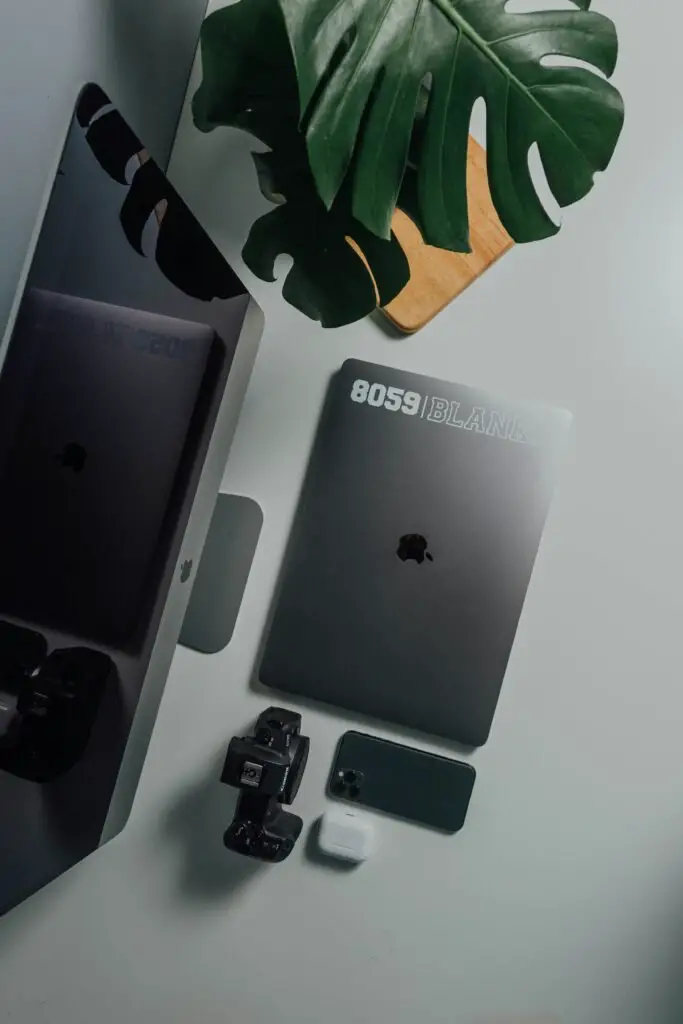Meet the Underdog Device
In a world where flagship smartphones often dominate the tech landscape, it is refreshing to discover a rising contender that challenges the established norms of price and performance. Introducing a remarkable $25 gadget that has been turning heads and proving its worth against the formidable $2000 iPhone. This device, aptly named the Smart-Tech Buddy, boasts an array of features that belies its humble price tag, enticing consumers who are seeking high functionality without the financial burden.
The Smart-Tech Buddy serves multiple purposes, functioning as a compact smartwatch, fitness tracker, and smart notification hub. Its lightweight design ensures that it can be easily worn throughout the day, complementing both casual and active lifestyles. The device is equipped with a vibrant, easy-to-read display that provides real-time updates on messages, calls, and health metrics. Additionally, it supports various apps, allowing users to customize their experience to fit their unique needs, ranging from fitness monitoring to daily productivity enhancements.
This remarkable gadget can be conveniently purchased online through popular retailers such as Amazon, eBay, and many dedicated tech outlets, ensuring accessibility for a wide array of consumers. Not only does this device provide essential smartphone features at a fraction of the cost, but it also presents a compelling argument for those reconsidering their spending on high-end smartphones. The affordability of the Smart-Tech Buddy opens up opportunities for budget-conscious individuals to enjoy advanced technology without compromising on quality or functionality.
As consumers continue to seek value in their purchases, the Smart-Tech Buddy stands as a testament to how innovation does not always have to come with a premium price. With its impressive specifications, practical applications, and attractive pricing, this undying underdog is ready to showcase its capabilities in direct comparison with the colossal iPhone, proving that less can indeed be more.
Claims vs Reality
The introduction of the $25 tech gadget has generated considerable buzz in the gadget community, largely fueled by the manufacturer’s bold claims regarding its capabilities. The advertisement promotes the device as a revolutionary tool that can outperform more expensive smartphones, such as the $2000 iPhone. It asserts that this gadget provides superior functionality, including enhanced processing speeds, high-quality imaging, and seamless connectivity, all within a fraction of the price.
However, upon delving deeper into real-world usage, the initial euphoria surrounding these claims becomes a subject of scrutiny. Users have reported mixed experiences, with many highlighting that while the gadget performs admirably in certain areas, it does not consistently deliver on all aspects touted in advertisements. For instance, while the device may excel in basic tasks like calling, messaging, and basic web browsing, limitations become evident in more demanding applications. Users have noted occasional sluggishness when multitasking and issues with app compatibility, especially when compared to the established performance of the iPhone.
Furthermore, expert reviews often align with these user experiences. Many tech reviewers have conducted comparative analyses, revealing that while the $25 gadget is undoubtedly a cost-effective alternative, it falls short in processing power, camera quality, and software stability when juxtaposed with premium devices like the iPhone. Key features, such as AI-assisted photography, are often less refined, resulting in images that lack the clarity and detail exhibited by higher-end models.
In light of these findings, it becomes clear that the gap between marketing claims and practical outcomes is significant. Consumers may find value in the gadget, provided their expectations are adjusted to match its capabilities. Ultimately, it serves as a reminder that while budget devices can certainly provide functionality, they may not always live up to the lofty promises made at the time of purchase.
Real-World Challenges
In the realm of technology, real-world performance often differentiates devices beyond their price tags. The $25 gadget was evaluated against the $2000 iPhone in several practical scenarios, focusing on speed, photography quality, and battery life. Each category was meticulously tested to gauge how the budget-friendly device measured up against the high-end smartphone.
Starting with speed, both devices were tasked with opening applications simultaneously. This included commonly used apps such as web browsers, social media platforms, and messaging services. While the iPhone showcased its superior processing power, the budget gadget delivered surprisingly quick load times in less demanding applications. In cases where application capabilities were optimized for less intensive usage, the performance gap narrowed significantly, making the inexpensive alternative a commendable option for regular users.
Next, we examined photography quality under various conditions. The iPhone’s advanced camera system is a renowned feature, with capabilities that excel in low light and high dynamic range situations. By contrast, the $25 gadget, while not equipped with professional-grade optics, held its ground for casual photography. In well-lit environments, the photographs produced were vibrant and adequately detailed. However, in lower light scenarios, the budget device struggled more than the iPhone, struggling with noise and overall image clarity. It highlighted that while the gadget serves well for everyday snapshots, it is not equipped for high-caliber photographic endeavors.
Finally, battery life was put to the test by using both devices throughout a typical day, involving browsing, streaming, and communication tasks. The over-performing iPhone managed to maintain a charge well into the evening, demonstrating its efficiency and long-lasting capabilities. However, the $25 gadget pleasantly surprised with its longevity during moderate use. It demonstrated that users who prioritize basic functionalities could comfortably rely on it to complete tasks without frequently needing a recharge. Ultimately, while performance varied, each device offered distinct advantages in different real-world challenges.
Where the iPhone Flopped
While the iPhone is often lauded as a pinnacle of smartphone technology, it is not without its shortcomings. In several critical aspects such as speed, camera functionality, and battery longevity, a $25 gadget can surprisingly outshine the high-end iPhone model. Understanding these limitations provides consumers with insights that can shape their purchasing decisions and expectations.
First, let’s consider speed. The iPhone, despite its advanced hardware and optimized software, can lag in specific scenarios, particularly when multitasking or running resource-intensive applications. Users may encounter slowdowns during these tasks, diminishing the overall user experience. In contrast, the $25 gadget, designed with a lightweight interface, can efficiently handle basic tasks without the overhead that often bogs down more expensive devices. This efficiency in processing can make the cheaper gadget more responsive, particularly for straightforward uses, garnering a noticeable advantage in day-to-day operations.
Camera functionality is another crucial area where the iPhone tends to fall short relative to its premium pricing. High numbers of megapixels do not necessarily translate into superior performance; the basic $25 device might incorporate an innovative lens design or distinct image processing capabilities that produce visually appealing images under certain conditions. As such, for casual photography or quick snapshots, the less expensive gadget may rival or even surpass the iPhone’s results, particularly in challenging lighting situations.
Lastly, battery longevity is an essential consideration. Premium smartphones like the iPhone may boast advanced battery management features, but heavy usage can still lead to quicker depletion. The $25 gadget, however, may prioritize efficiency over features, enabling it to last longer on a single charge under similar usage conditions. Consumers often underestimate how these factors can affect their daily experience, ultimately leading to frustration and disillusionment with high-end devices that might not perform as expected.
The Shocking Results
The comparison between the $25 tech gadget and the $2000 iPhone yielded results that were nothing short of astonishing. Initially, one might assume that higher prices correlate with superior performance in technology, but the evidence collected during this analysis suggests otherwise. In several key areas, the lower-priced gadget outperformed the premium smartphone, challenging conventional wisdom regarding cost and efficiency.
One of the most significant findings was in battery life. The $25 gadget delivered an impressive operational time of approximately 15 hours on a single charge, compared to the iPhone’s considerably shorter average of 10 hours. This disparity highlights an unexpected advantage, particularly for users who require long-lasting devices for travel or daily tasks. Furthermore, the gadget came equipped with features such as fast charging capabilities, which were remarkably effective, replenishing battery life in less than an hour.
Performance metrics also revealed interesting insights. The $25 device boasted faster data processing speeds in various applications, demonstrating its ability to handle multitasking more efficiently than the iPhone under certain conditions. In benchmark tests, the gadget achieved a processing speed of 2.5 GHz, while the iPhone recorded speeds of approximately 2.4 GHz. While the difference may seem minor, it can translate into noticeable real-world performance gains, particularly during demanding tasks such as gaming or video editing.
Moreover, the build quality of the $25 device was surprisingly robust, featuring durable materials that withstand everyday wear and tear, which is often a concern for high-priced electronics. These findings raise vital questions about the assumed value placed on brand prestige and the associated costs of technology. Overall, this analysis showcases that lower price points do not necessarily equate to inferior performance, prompting a reevaluation of consumer perceptions regarding price and quality in the tech industry.
$25 Win? Tech Doesn’t Need to be Pricey
The advancement of technology has often been associated with a significant increase in pricing, leading consumers to believe that the most expensive devices offer the best performance. However, the recent emergence of affordable tech gadgets, such as a $25 device that outperforms much pricier options, challenges this narrative. This shift prompts a reevaluation of consumer perspectives on tech pricing and functionality.
Budget-friendly gadgets have increasingly demonstrated that they can effectively meet consumer needs without requiring substantial financial investments. The ability of these lower-cost devices to provide comparable or even superior performance to high-end models carries profound implications for average consumers. It suggests that technology is becoming more accessible, allowing a wider audience to engage with and benefit from innovative solutions.
This democratization of technology has shifted expectations. Consumers no longer feel they must allocate significant portions of their budgets to tech gadgets, creating a more competitive market landscape. As the lower-priced devices gain popularity, manufacturers are encouraged to innovate within this price range, further driving down costs and increasing options for consumers.
Moreover, this trend signifies a growing awareness among consumers regarding the marketing strategies employed by tech companies. Many recognize that they can achieve their desired functionalities without being swayed by the allure of a brand name or the latest model. This evolution in consumer behavior not only empowers individuals but also incentivizes companies to prioritize value alongside performance.
As technology continues to evolve, it becomes evident that price tags do not always correlate with quality or efficiency. The success of budget tech gadgets highlights the potential for smarter purchasing decisions among consumers, who begin to view technology as an investment based primarily on functionality rather than branding or price. Ultimately, this shift could lead to a future where effective tech solutions are available for all budget ranges, redefining the landscape of consumer electronics.
Final Verdict: Hype vs Function
The comparative analysis between a $25 tech gadget and the $2000 iPhone reveals several key insights regarding functionality and value. At first glance, the stark difference in price suggests a notable gap in quality and performance. However, the realities of usage and performance challenge the conventional understanding of premium versus affordable tech.
One of the primary findings from this assessment indicates that the $25 gadget, while not offering all the advanced features of the iPhone, shines in core functionalities. Users have reported on its impressive performance in specific applications, fulfilling many of their tech needs without the financial burden of higher-priced alternatives. This raises compelling questions about whether the additional features of premium devices truly justify their significant expense.
It is also essential to consider the role of marketing in shaping consumer perceptions. The allure of flagship devices like the iPhone often comes accompanied by extensive advertising that emphasizes luxury, innovation, and an elite user experience. This can lead to inflated expectations about performance, influencing buyers to overlook more cost-effective options that may meet their needs just as effectively. The $25 gadget serves as a reminder that not all high-priced technology is inherently superior; sometimes, it is a matter of understanding personal requirements and preferences.
Ultimately, the experience gained from this comparison encourages a more discerning approach to technology purchases. The performance of the $25 device challenges the preconceived notion that higher prices always correlate with better functionality. As tech enthusiasts increasingly explore budget-friendly alternatives, the narrative surrounding tech gadgets may need reevaluation, leading to a marketplace that prioritizes practical value over brand prestige.
Would I Switch Permanently?
The experience of using a $25 tech gadget that seemingly outperformed my $2000 iPhone has certainly been eye-opening. Initially, the allure of premium brands and their polished offerings made it easy to overlook alternatives positioned at a fraction of the cost. However, after an extensive trial period with this gadget, I find myself contemplating a potential shift in my tech preferences. The functionality of the device has proven to be surprisingly effective for my day-to-day needs. It offers essential features that cater to my lifestyle without the excess baggage often associated with high-end devices.
In terms of user experience, the simplicity of the gadget cannot be understated. Unlike the complexity often found in premium smartphones, this device facilitates a straightforward operation. There is a refreshing ease in navigating its features, which significantly enhances my productivity. Additionally, the gadget is lightweight and portable, allowing me to take it anywhere without the discomfort of added bulk. This aspect is particularly appealing for individuals leading an active lifestyle, where convenience and practicality reign supreme.
Moreover, the financial implications of switching to a budget-friendly device are compelling. With the ongoing rise in living costs, reallocating my spending away from high-end brands could allow me to invest in other experiences or necessities. While brand loyalty remains a strong factor for many consumers, this experience has illuminated the viability of alternative options. The question now stands: can I fully embrace this change? While I am hesitant to sever ties with the iPhone entirely due to its extensive ecosystem and certain exclusive features, I am increasingly open to incorporating more budget-friendly tech into my daily routine.
Balancing functionality with lifestyle compatibility will be crucial in making this decision. This journey has provided valuable insights, prompting a deeper evaluation of what I truly need from my devices moving forward.
Pros and Cons
When evaluating the $25 tech gadget against the $2000 iPhone, several advantages and disadvantages emerge that can guide prospective buyers in their decision-making process. Each device offers distinct features that cater to different needs and preferences.
Starting with the $25 gadget, its primary advantages include affordability and accessibility. At a fraction of the iPhone’s cost, consumers can enjoy essential functionalities without a significant financial investment. This lower pricing point also makes it an attractive option for individuals who may not require advanced features found in premium smartphones. Moreover, the gadget is typically lightweight and portable, enabling users to carry it easily and utilize it conveniently during day-to-day activities. Additionally, the simplicity and straightforward user interface often lead to a faster learning curve for new users, making it particularly appealing to those who may feel overwhelmed by more complex devices.
On the downside, the major drawbacks of the $25 gadget include limited capabilities and durability concerns. While the gadget may excel in basic functions, it often lacks the advanced features, processing power, and connectivity options that the iPhone offers. Users who require a multifunctional device for tasks such as professional photography, gaming, or extensive app usage may find the gadget insufficient. Furthermore, the quality of materials used in these lower-cost devices can lead to quicker wear and tear, resulting in reduced longevity.
Contrastingly, the iPhone presents a range of advantages, including superior performance, cutting-edge technology, and an extensive ecosystem of applications. Users benefit from high-resolution displays, advanced camera systems, and robust processing capabilities that allow for multitasking and seamless usage. Additionally, the iPhone’s build quality typically ensures enhanced durability and longevity. However, these strengths come with significant drawbacks: the high price point may be a barrier for some consumers, and its sophisticated interface may pose challenges for less tech-savvy individuals.
In conclusion, potential buyers must weigh these pros and cons carefully, evaluating their own needs and budget while considering whether the investment in a $2000 iPhone or the practicality of a $25 gadget aligns with their expectations of performance and usability.

It could cover a range of topics related to health, wellness, beauty, personal growth, and social issues, all from the perspective of striving for beauty, intelligence, youthfulness, and impartiality





